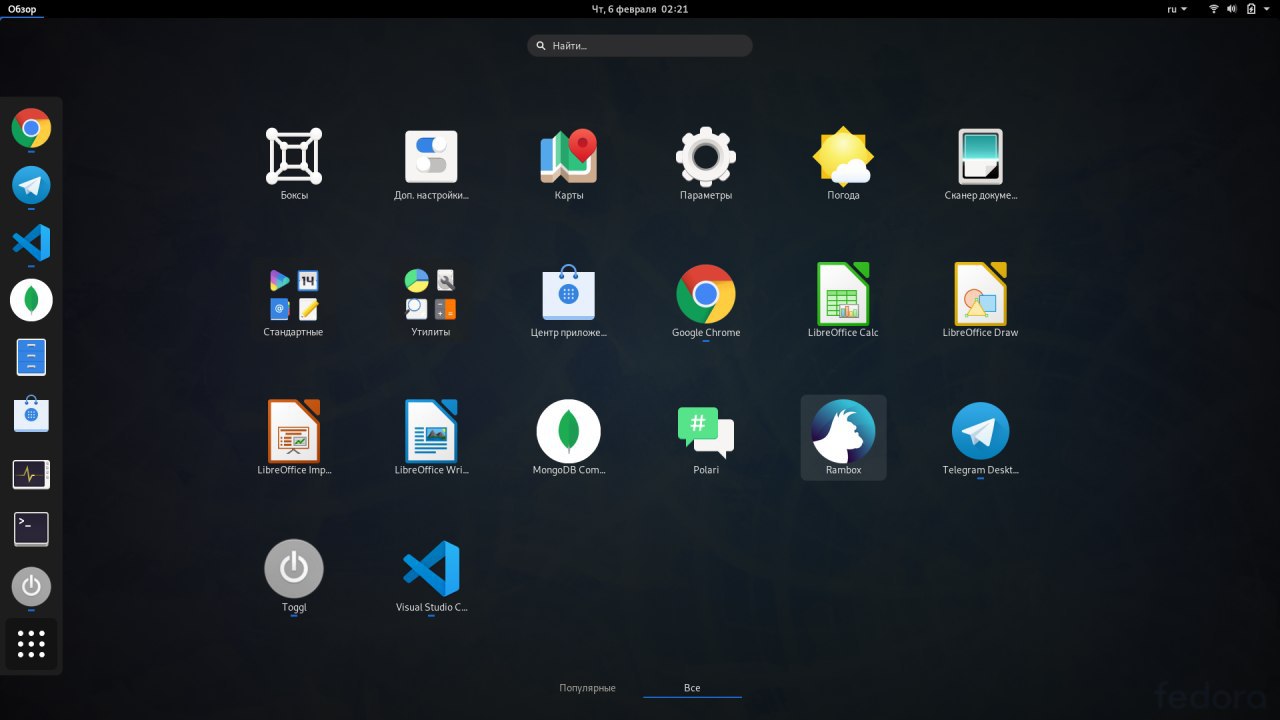I
Size: a a a
2020 February 06
))
𝙼
filmix- один из сайтов с фильмами, который юзает видеобокс
𝙼
А не агрегатор
𝙼
Как называется приложение, в котором все веб приложения собираются в одном месте?
rambox?
M🇷
rambox?
Великолепен
I
filmix- один из сайтов с фильмами, который юзает видеобокс
так он тоже получает источники
I
<b>Christian Rebischke: Tests for the Arch Linux infrastructure</b>
The Arch Linux DevOps team uses a combination of Ansible and Terraform to manage their hosts. If you want to have a look on their infrastructure repository, you can do so via this link: <a href="https://git.archlinux.org/infrastructure.git/tree/">https://git.archlinux.org/infrastructure.git/tree/</a>The combination of Ansible and Terraform works quite well for Arch Linux, the only subject we are missing is proper testing. I want to present a small proof of concept on how we could do tests in the future. My approach uses <a href="https://github.com/ansible-community/molecule">molecule</a> for testing. Molecule utilizes <a href="https://vagrant.io">Vagrant</a> and <a href="https://docker.io">Docker</a> for running the Ansible Playbooks.Arch Linux provides images for both of them, since quite a while now. These projects are called <a href="https://github.com/archlinux/arch-boxes">Arch-Boxes</a> and <a href="https://github.com/archlinux/archlinux-docker">Archlinux-Docker</a>. Therefore it makes sense to reuse them infrastructure tests.The actual test are written in Python with support of the library <a href="https://testinfra.readthedocs.io/en/latest/">testinfra</a>.So let us pick a first role we want to test:infrastructure/roles/sshd:<pre>❯ ls -ladrwxr-xr-x - chris 15 Dec 2019 handlersdrwxr-xr-x - chris 15 Dec 2019 tasksdrwxr-xr-x - chris 15 Dec 2019 templates</pre>We can initialize a molecule test scenario on an already existing Ansible role via molecule init scenario --role-name sshd --driver-name vagrant. The command is going to create a molecule directory for us. The created directory will have this structure:<pre>❯ tree moleculemolecule└── default├── INSTALL.rst├── molecule.yml├── playbook.yml├── prepare.yml└── tests├── __pycache__│ ├── test_default.cpython-38-pytest-5.3.5.pyc│ └── test_default.cpython-38.pyc└── test_default.py</pre>The interesting files we will have a look at are molecule.yml, prepare.yml and test_default.py. In molecule.yml we configure basic molecule behavior. In prepare.yml we can do first preparations with Ansible (we need to do this, because Arch Linux is slightly different to distributions the molecule team normally uses). test_default.py stores our tests as testinfra functions.The molecule.yml shouldn’t be so different for Arch Linux to the one that is usually generated by molecule, but let me highlight the changes:infrastructure/roles/sshd/molecule/default/molecule.yml:<pre class="chroma">---dependency: name: galaxydriver: # We use Vagrant here, because we have other roles that need kernel modules etc name: vagrant provider: name: virtualboxlint: name: yamllintplatforms: # Here we specify our official archlinux/archlinux image - name: instance box: archlinux/archlinuxprovisioner: name: ansible lint: name: ansible-lint # This option is important. The Ansible infrastructure roles use root on default. # So we need to gain privilege via sudo and become root for running all roles. connection_options: ansible_become: trueverifier: name: testinfra lint: name: flake8</pre>prepare.yml includes some magic, regarding mirror setup, installing python and a fresh restart. We need this mirror setup tasks, because we are just enabling all mirrors in our Arch Linux Vagrant box right now. This leads to slow mirrors. I am going to <a href="https://github.com/archlinux/arch-boxes/issues/81">fix</a> this in a new Arch-Boxes release. For now I just set static mirrors from which I know that they are fast for my location. In the second prepare.yml task we need to install python for Ansible. Consider that I use pacman -Syu here, because I <strong>want</strong> a full system upgrade, everything else will lead us into trouble when playing around with kernel…
The Arch Linux DevOps team uses a combination of Ansible and Terraform to manage their hosts. If you want to have a look on their infrastructure repository, you can do so via this link: <a href="https://git.archlinux.org/infrastructure.git/tree/">https://git.archlinux.org/infrastructure.git/tree/</a>The combination of Ansible and Terraform works quite well for Arch Linux, the only subject we are missing is proper testing. I want to present a small proof of concept on how we could do tests in the future. My approach uses <a href="https://github.com/ansible-community/molecule">molecule</a> for testing. Molecule utilizes <a href="https://vagrant.io">Vagrant</a> and <a href="https://docker.io">Docker</a> for running the Ansible Playbooks.Arch Linux provides images for both of them, since quite a while now. These projects are called <a href="https://github.com/archlinux/arch-boxes">Arch-Boxes</a> and <a href="https://github.com/archlinux/archlinux-docker">Archlinux-Docker</a>. Therefore it makes sense to reuse them infrastructure tests.The actual test are written in Python with support of the library <a href="https://testinfra.readthedocs.io/en/latest/">testinfra</a>.So let us pick a first role we want to test:infrastructure/roles/sshd:<pre>❯ ls -ladrwxr-xr-x - chris 15 Dec 2019 handlersdrwxr-xr-x - chris 15 Dec 2019 tasksdrwxr-xr-x - chris 15 Dec 2019 templates</pre>We can initialize a molecule test scenario on an already existing Ansible role via molecule init scenario --role-name sshd --driver-name vagrant. The command is going to create a molecule directory for us. The created directory will have this structure:<pre>❯ tree moleculemolecule└── default├── INSTALL.rst├── molecule.yml├── playbook.yml├── prepare.yml└── tests├── __pycache__│ ├── test_default.cpython-38-pytest-5.3.5.pyc│ └── test_default.cpython-38.pyc└── test_default.py</pre>The interesting files we will have a look at are molecule.yml, prepare.yml and test_default.py. In molecule.yml we configure basic molecule behavior. In prepare.yml we can do first preparations with Ansible (we need to do this, because Arch Linux is slightly different to distributions the molecule team normally uses). test_default.py stores our tests as testinfra functions.The molecule.yml shouldn’t be so different for Arch Linux to the one that is usually generated by molecule, but let me highlight the changes:infrastructure/roles/sshd/molecule/default/molecule.yml:<pre class="chroma">---dependency: name: galaxydriver: # We use Vagrant here, because we have other roles that need kernel modules etc name: vagrant provider: name: virtualboxlint: name: yamllintplatforms: # Here we specify our official archlinux/archlinux image - name: instance box: archlinux/archlinuxprovisioner: name: ansible lint: name: ansible-lint # This option is important. The Ansible infrastructure roles use root on default. # So we need to gain privilege via sudo and become root for running all roles. connection_options: ansible_become: trueverifier: name: testinfra lint: name: flake8</pre>prepare.yml includes some magic, regarding mirror setup, installing python and a fresh restart. We need this mirror setup tasks, because we are just enabling all mirrors in our Arch Linux Vagrant box right now. This leads to slow mirrors. I am going to <a href="https://github.com/archlinux/arch-boxes/issues/81">fix</a> this in a new Arch-Boxes release. For now I just set static mirrors from which I know that they are fast for my location. In the second prepare.yml task we need to install python for Ansible. Consider that I use pacman -Syu here, because I <strong>want</strong> a full system upgrade, everything else will lead us into trouble when playing around with kernel…
I
наес хтмл
M🇷
Охуенно ты спишь канеш
I
Охуенно ты спишь канеш
он спит, а его вторая личность бодрствует
I
его вторая личность кодит
M🇷
Наконец-то
M🇷

Федорочка вы-ру-ча-ет
I
M🇷
я доволен, что на каждую проприетарь, которую я сегодня установил, есть своя репа от реального поставщика, а не мейнтейнера
M🇷
Ещё очень понравилось, что репы несвободного ПО можно включить сразу же и официальные репозитории будут добавлены в обозрение
I
M🇷
А я хочу спать но нельзя
M🇷
Надо доделать и лечь со спокойной душой
M🇷
Paste по тапу тремя пальцами





